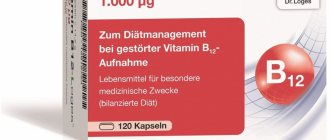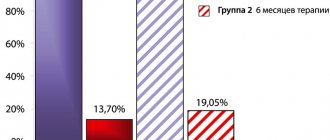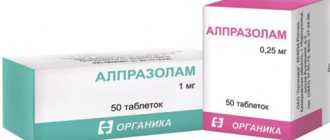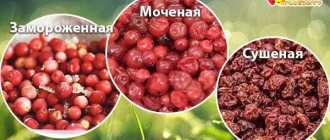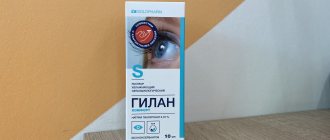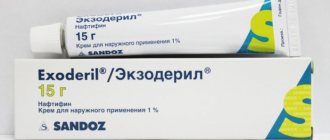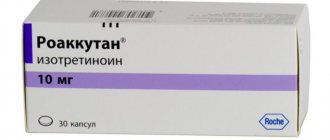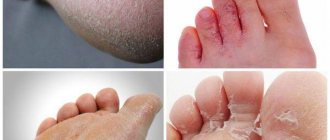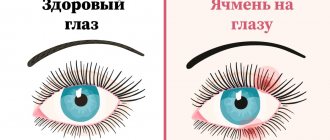The appearance of dubious spots on the skin, which sometimes itch and flake, is a serious reason to consult a doctor and check for dermatological diseases.
Pityriasis rosea (Giber's disease, roseola exfoliates, pityriasis, pithiasis) is an acute skin disease with specific rashes, a peculiar course and a tendency to seasonal relapses. It manifests itself in the formation of pink spots on the skin of the chest, back, limbs and other parts of the body, located along the lines of maximum extensibility (Langer's lines). Over time, the rashes become like large medallions. From the moment the first maternal plaque (large spot) is detected until the symptoms of the disease completely disappear, 30-45 days pass.
At CELT you can consult a dermatologist.
- Initial consultation – 3,500
- Repeated consultation – 2,300
Make an appointment
Causes of pityriasis
Despite the fact that Gibert's disease is very common, the mechanism of the disease is not fully understood. The following factors are believed to play an initial role:
- Exposure to viruses (type 7 herpesvirus, etc.), bacteria and other infectious agents. This is confirmed by tests that prove the presence of pathogens in the body. Very often, skin disease appears against the background of influenza, acute respiratory infections and other infections.
- Attachment of allergic reactions.
- Bites from bedbugs, lice and other blood-sucking insects.
- Reduced immune defense.
- Frequent hypothermia and stress.
- Violation of gastrointestinal functions and metabolism.
- Introduction of vaccines.
How is ringworm treated?
In each case, treatment for ringworm should be selected individually, since its composition and duration have their own specifics and are determined by the type, location and stage of the pathology.
Only prescriptions from a dermatologist are effective; they take into account the current clinical picture, the characteristics of the patient’s physical health and his age.
Therapy is aimed not only at relieving the symptoms of the pathology, but also at inactivating the pathogen. The chronic form of the disease also provides support for the immune system, normalization of metabolism and hormonal levels.
The following groups of drugs are used to treat ringworm:
- systemic and local antimycotics;
- antiseptic solutions;
- multivitamin complexes.
Symptoms of pityriasis
Clinical manifestations of pityriasis rosea are caused by exposure to infectious pathogens and the development of allergic reactions. The skin disease is manifested by the following symptoms:
- General weakness, enlarged lymph nodes, elevated body temperature.
- The formation on the body of small pinkish and mauve spots that have a symmetrical shape and appear along Langer’s lines. Rashes appear on the back, limbs, chest, neck, groin and other parts of the body.
- The appearance on the skin of 2-3 bright red maternal plaques (their diameter is 4 cm), dotted with scales. After a week, small pink rashes form from these large spots.
- Dropout spots spread throughout the body and increase in size (their diameter is 1-2 cm), can peel off, and resemble medallions in shape.
- Severe skin itching.
- Increased irritability.
With proper therapy, the symptoms of pityriasis disappear after 5-8 weeks, and the patient fully recovers. Longer therapy is required if the rash has dense nodules, blisters or papules. In exceptional cases, pityriasis rosea turns into eczema, purulent inflammation of the skin, folliculitis, streptococcal infections, etc. develop. The development of complications is facilitated by the patient’s excessive sweating, a tendency to allergies, constant friction of the skin and improper treatment.
What is ringworm?
Ringworm is an infectious skin disease caused by the parasitic fungi Microsporum canis and Trichophyton tonsurans, it is part of the group of ringworms that primarily affect the skin, hair and nails. This is an infectious dermatological pathology caused by dermatophyte fungi. It is also called dermatomycosis, scab, micro- and dermatophytosis.
Doctors distinguish several types of ringworm, depending on the location, nature of the course and the causative agent.
The main types of the disease are:
- chronic or ringworm of smooth skin;
- surface;
- ringworm of the nail plate;
- infiltrative-suppurative.
Since ringworm is caused by two types of fungi, in medicine it is diagnosed as microsporia and trichophytosis. These fungi have persistent pathogenicity, pronounced virulence and often cause acute diseases with varied clinical manifestations.
A disease caused by fungi of the genus Microsporum canis is microsporia. Depending on the location, there is microsporia of smooth skin and microsporia of the scalp.
Trichophytosis is caused by the activity of the dermatophyte Trichophyton tonsurans, which, through the anthroponotic route of infection, causes inflammation of the scalp and smooth skin, and through the zootroponotic route, inflammation in the deep layers of the dermis, accompanied by suppuration.
The presence of fungal spores does not always provoke damage to the skin and its appendages. The transition of the fungus from an inactive state to a pathogenic state is facilitated by metabolic and endocrine disorders, immune diseases, hypovitaminosis or vegetative-vascular dystonia. This increase in the pathogenicity of dermatophytes provokes an exacerbation of inflammatory processes, the spread of the fungus through the blood and lymph flow.
The disease is weakly expressed during the development of a latent infection and when localized in previously affected areas, and the high virulence of the fungus is formed during a relapse, gradually decreasing during the course of the infection.
Symptoms of ringworm: At the end of the incubation period, itchy ring-shaped spots of red-pink color appear on the skin, on the surface of which bubbles appear, after which a crust and peeling remain. The hair at the site of the lesion breaks and falls out.
Normally, the immune system is able to cope with the pathogen and prevent its activity, but there are a number of factors that increase the risk of ringworm, namely:
- skin microtraumas;
- lack of vitamins and microelements;
- prolonged contact with the source of infection;
- high humidity and air temperature;
- exacerbation of chronic diseases, etc.
In a situation where there is an adult or child with lichen at home, it is necessary to take preventive measures to reduce the likelihood of its spread, namely:
- use separate towels and bed linen;
- wash your hands thoroughly with soap, especially if you touched the patient’s things;
- use gloves when touching areas of disease;
- undergo examination and take tests to identify pathogens, etc.
The main method for diagnosing ringworm is the use of a Wood's lamp, under the light of which the affected areas acquire a characteristic greenish glow. Microscopic examination and culture of skin and hair scales are effective to confirm the diagnosis.
Timely diagnosis and a properly selected treatment regimen can effectively eliminate ringworm in children and adults, preventing its spread. The pathology is prone to relapse, since the presence of spores of viable fungi can cause repeated damage. It is extremely important to complete the course of treatment and follow all doctor’s recommendations.
Diagnosis of pityriasis
If you find suspicious spots on the skin, you should promptly contact a dermatologist. During a visual examination, the doctor assesses the nature of the rashes, their shape, size, location on the body and is able to make the correct diagnosis. After dermatoscopy, the following studies are additionally carried out: biochemical tests of blood and urine, RMP (microprecipitation reactions with antigens), skin scrapings from injured areas.
A more complex diagnosis is carried out if the skin disease lasts more than six weeks. In these cases, discharge from the affected lesions is sent for bacterial culture. A biopsy and subsequent histological studies will help make the correct diagnosis. In order to distinguish Zhiber's disease from other types of lichen, toxicerma, psoriasis, complicated syphilis and other pathologies, fluorescent diagnostics are carried out, scrapings are checked for the presence of pathogenic fungi, RPR tests are done for syphilis, etc.
Ringworm on the skin: treatment
Treatment of the disease is especially effective at an early stage. Ringworm can be cured in all patients, regardless of age. In this case, you need to consult a doctor even with minor manifestations. For diagnostic purposes, a dermatologist conducts a visual or instrumental examination (using a special lamp), prescribes a series of tests - studying urine, blood, as well as immunological studies and skin scrapings.
After establishing the exact cause and type of lichen, treatment is prescribed. Most often it is associated with the use of special ointments externally (antifungal drugs). The course of therapy lasts from 2 weeks to 3-4 months.
Main areas of treatment:
- Etiotropic – the use of drugs that eliminate the cause of the disease. These can be fungicides or antiviral agents (based on Acyclovir).
- Elimination of itching, spots and other unpleasant symptoms.
- Carrying out procedures - UV therapy, physiotherapy, increasing resistance (strengthening the immune system), maintaining personal hygiene.
- In rare cases, it is necessary to disinfect the premises, especially linen, furniture, and personal belongings.
It is not recommended to treat lichen yourself at home. This is dangerous because you can waste time and also infect other people. In addition, the patient often cannot determine which drug to treat the pathology with. For example, a person “prescribes” an antimicrobial ointment while he develops herpetic (viral) lichen. In rare cases, lost time can result in severe consequences such as blindness, arthritis, and other complications.
Pityriasis rosea in pregnant women
Pityriasis occurs more often in women than in men. It is especially dangerous when the skin disease occurs in pregnant women. If you notice any rashes, it is important to immediately visit a dermatologist and undergo treatment. It is unacceptable to risk the baby’s health and expect the plaques to disappear on their own. If the disease is not treated, then bacterial infections appear, which are much more difficult to deal with.
If a pregnant woman has not been diagnosed with pityriasis rosea, it is nevertheless important to adhere to the following recommendations:
- clothing made from cotton and linen is preferable to synthetic and woolen fabrics
- limiting heavy physical activity
- For hygienic purposes, use only warm water
- timely moisturizing of damaged skin areas
How does ringworm begin?
Favorable conditions contribute to the introduction and reproduction of a pathogenic fungus in the skin, triggering the infectious process. In the initial stages, this period is asymptomatic. After which the development of the pathology acquires clinical manifestations, the signs of which depend on the stage of the pathology.
The stages of the infectious process during the development of ringworm are:
- incubation period;
- period of mushroom growth;
- refractory stage (period of insensitivity, rest);
- regression.
In the skin, the fungus forms branched mycelium, which gradually invades new areas of the skin, while old lesions become the location of its spores. This period of fungal growth is determined by the rapid increase in the colony of the pathogen, active division of skin cells and the high rate of exfoliation of the affected epidermis.
Since most often the growth of the colony outstrips the rate of change of the stratum corneum, the infectious process spreads. An intense immune reaction (inflammation) in the lesion is displayed in the form of a red ring, which, in the chronic course of mycosis, becomes the permanent residence of the pathogen.
Treatment of pityriasis
When a patient is diagnosed with Gibert's disease, the dermatologist develops an individual treatment regimen to avoid dangerous complications. There is an opinion that pityriasis rosea will go away on its own in a few weeks. As a result, complications arise, and the patient comes to the dermatologist with an advanced form of the disease.
Drug treatment includes the following medications:
- antihistamines that relieve the patient from itching, swelling and redness on the body
- corticosteroid, desensitizing and antipruritic ointments. Medicinal compositions containing betamethasone, hydrocortisone, etc. are applied to the affected skin and lightly rubbed in. The medications eliminate rashes, get rid of peeling, and effectively restore the skin.
- drying agents containing zinc to accelerate skin healing
- Broad-spectrum antibiotics are indicated in cases where a bacterial infection is associated with pityriasis rosea. It is unacceptable to start taking antibacterial drugs on your own, since they are selected individually, taking into account laboratory tests.
- antifungal medications: drugs containing clotrimazole and other active substances are prescribed topically in the form of gels and ointments
- antiviral drugs containing acyclovir and other active components. Dermatological tests have confirmed that if antiviral drugs are prescribed in combination with antibiotics from the first days, the patient quickly recovers.
- neutral water-shaken preparations Dermatologists prescribe pharmacy talkers containing zinc oxide, menthol and anesthesin to patients with pityriasis rosea. These products relieve itching and pain in damaged areas and speed up recovery.
- iodine is an aggressive, but extremely effective remedy. Injured skin is treated with iodine in the morning and evening. Initially, the skin begins to peel off more actively, but then there are no extra scales left on it. Not all experts recommend that their patients cauterize damaged areas with iodine, since this drug can be harmful if used incorrectly.
Recommendations for patients
During the treatment period, the patient is recommended to adhere to the following recommendations:
- Follow a hypoallergenic diet: avoid nuts, citrus fruits, chocolates, honey, etc. Products containing artificial colors should be excluded from the menu. It is worth limiting the consumption of fried foods, carbonated drinks, fast food, strong alcohol and coffee.
- Limit water treatments within reasonable limits and give preference to the shower.
- Refuse to use aggressive hygiene and cosmetic products for the body. Gels and other detergents should not dry out the skin.
- Give preference to underwear made from natural fabrics.
- Moderate sunbathing - ultraviolet light helps the skin recover faster.
- Follow the recommendations of a dermatologist, apply to the skin only products recommended by a specialist.
- Folk remedies can be used only after consultation with your doctor.
How is ringworm transmitted?
Ringworm is transmitted in two ways:
- from a sick animal – zoonotic with an incubation period of one week;
- from an infected person – anthroponotic with an incubation period of up to 6 weeks.
Children are at risk because they most often come into contact with the carriers of the pathogens of this disease - cats and dogs. Children's skin is characterized by low density of the stratum corneum and weak protective properties of the water-lipid mantle. The stratum corneum prevents the penetration of the fungus into the layers of the skin, since its spores are located between the horny scales, and the water-lipid mantle forms a barrier to the penetration of pathogens.
The infection is also transmitted by non-compliance with personal hygiene standards and the use of other people's personal belongings containing fungal spores (hats, combs, bed linen, etc.).
Can I go to work or school with ringworm?
The presence of this diagnosis requires isolation of the patient from the team for at least two weeks. In schools and other children's institutions, it is mandatory to notify parents for timely detection of the disease in other children.
The disappearance of ringworm symptoms and 3 negative tests for the presence of fungus are a reason to return to school or work.
If a dermatomycosis infection has been detected in a team, then to prevent pathology, you can use antifungal shampoos for some time, carry out wet cleaning with the addition of antiseptic solutions, and strictly observe personal hygiene.
- Treatment of lichen in Kharkov;
- treatment of lichen in Uzhgorod;
- treatment of deprivation in Sumy;
- treatment of lichen in Poltava;
- treatment of lichen in Odessa;
- treatment of deprivation in Nikolaev;
- treatment of lichen in Mariupol;
- treatment of deprivation in the Dnieper.
3
1
0
Article rating:
3.8 out of 5 based on 5 ratings
Author: Mangusheva Victoria Yurievna
Dermatovenerologist, cosmetologist, trichologist. Candidate of Medical Sciences, doctor of the highest category. Work experience more than 10 years.
Factors causing the disease
This disease is chronic and can be transmitted at the genetic level. However, among the reasons for its appearance or exacerbation, doctors name several factors:
- weakening of the immune system and increased infections;
- exposure to third-party chemicals (medicines, household and industrial preparations);
- the body’s own synthesis of dangerous components due to stressful situations;
- existing diseases (allergies, gastrointestinal disorders, damage to the mucous membrane, diabetes).
Accurate identification of the most likely causes of the disease subsequently determines the most effective method of treating lichen ruber.
General recommendations
Most types of lichen are successfully treated. Visit a dermatologist. The choice of treatment method depends on:
- varieties;
- causes and provoking factors;
- contraindications;
- presence of concomitant diseases.
To combat skin infections, medications and traditional recipes are used. The duration of the course of therapy and the selection of medications are determined by the doctor.
Helpful Tips:
- limit the patient’s contact with family members;
- wash and iron bed and linen daily;
- select separate dishes;
- After caring for the patient, disinfect your hands with Citeal. Prepare the solution according to the instructions;
- Wash the floor daily with Alaminol or Alpinol.
How long does it take to treat ringworm?
The treatment process for ringworm is lengthy, usually taking at least six weeks, with systemic therapy lasting mainly 15-25 days.
The effectiveness of therapy is assessed using laboratory tests. In a situation where tests indicate a significant decrease in the number of fungal spores after 2 weeks of a medication course, it is necessary to continue the chosen treatment. In some cases, fungal shedding can last for several months.
After the signs of pathology disappear, you need to scrape the epidermis three times in previously damaged areas:
- immediately after completion of therapy;
- 7 days after therapy;
- after 2-3 months.
The result of therapy is considered successful if all three tests show negative results.
What brand of deprivation remedy is better to choose?
The choice of medication often depends on the type of pathology. Medicines for the treatment of lichen must have anti-inflammatory, antifungal or antiviral effects. External products contain components with a drying, astringent or moisturizing effect. The drug should be prescribed by a doctor after receiving the diagnostic results. Self-medication threatens the disease to become chronic, the treatment of which will take a long period. The review contains the best remedies for deprivation from the following companies:
- JSC Sintez is a large enterprise in the Russian pharmaceutical industry. The quality system covers all stages of drug production. Control of the properties of raw materials and finished products is carried out in our own laboratories. In terms of production volumes, the plant is among the top 10 companies in the domestic pharmaceutical industry.
- Bayer AG is a German chemical and pharmaceutical company. Medicines for lichen are produced by a manufacturing plant located in Italy. The company operates under the motto: “We invent and make available products that help people make their lives better.” The company's medicines are valued for their safety and effectiveness. Success is based on excellence in research and development.
- Zentiva is an international pharmaceutical company headquartered in Prague. Specializes in the development and production of generic drugs for various therapeutic purposes. High-quality medicines meet the needs of modern methods of treatment and prevention. Users note the reliability and safety of the products.
- BioNaturika is a Russian company that produces various cosmetic products for the care of hair, facial skin and body. Product lines are divided according to the age of the user. There is a separate category of products for children and teenagers. It also offers contract manufacturing services at its own factory.
- Ekaterinburg pharmaceutical factory - the company produces various medicines in the form of ointments, pastes, tinctures, drops, elixirs, extracts, alcohol solutions. Some products are produced according to the following scheme: a foreign company pays for raw materials, the production and sale of the drug is carried out in Russia.
- Janssen is a Belgian manufacturer of medicines in the field of pain management, psychiatry, infectious pathologies, and gastroenterology. It is part of the largest developer and manufacturer of healthcare products, Johnson & Johnson. The company provides innovative solutions for the treatment of socially significant diseases.
- Sandoz is a German pharmaceutical company. Produces biosimilars and generics. Its goal is to increase the accessibility of medicine for all people. The brand is trusted by healthcare professionals. Products are valued for quality, availability, and efficiency. A wide range allows you to choose a product to solve most medical problems.
- JSC FP "Obolenskoe" - the company is part of the Alvansa group of companies. It produces more than 150 types of medicines of various pharmaceutical types, including generics and innovative developments. The quality of the goods meets accepted standards.
- Akrikhin is a large Russian pharmaceutical company producing finished drugs. The main part of the range is represented by highly effective generics. The company owns its own research and development center, which is equipped with modern technological equipment and analytical instruments. Every day, employees work on the production of innovative products for the treatment of dermatological, cardiac diseases, diabetes, and tuberculosis.
- PJSC Biosintez is a group of Russian pharmaceutical enterprises. Produces more than 180 types of finished drugs in various release forms. The nomenclature includes drugs from most pharmacotherapeutic groups. Now part of the Sun Pharmaceutical Industries Ltd concern.
- Pharmstandard-Laksredstva OJSC is a Russian pharmaceutical company engaged in the development and production of high-quality medicines. The range includes more than 330 drugs, among which 60 are innovative developments, 140 are included in the list of vital drugs.
- Vips-Med Firm is a Russian company whose list of services includes the manufacture of medical and pharmaceutical products. It carries out wholesale supplies of drugs of its own production to the regions of the country, the CIS and Baltic countries. Products meet health standards.
Prevention
How to protect yourself from a contagious disease:
- Monitor the course of diseases associated with the functioning of the endocrine system;
- Do not touch stray cats and dogs;
- Strengthen your immune system;
- Keep your hands and skin clean;
- Eat right;
- Be less nervous;
- Along with antibiotics, take medications to protect the intestinal microflora;
- Always wash your hands with soap after returning from public places;
- Wear protective gloves when working in your garden.
Now you know how to treat lichen. Do not use medications and traditional recipes without a doctor’s recommendation. Use the whole range of methods - the disease will recede.
Classification
Ringworm is an unpleasant disease, but it can be completely cured. There are even some types of lichen that do not require treatment and go away on their own.
In 2021, the most common types of lichen in humans are (see photo):
- Pityriasis, it is also known as "colored" or "variegated".
- Pityriasis rosea or Gibert's disease.
- Ringworm (aka “hairworm” or trichophytosis).
- Lichen planus, affecting the skin, mucous membranes, and, less commonly, nails.
- Scaly, popularly known as psoriasis.
- Shingles, sometimes called herpes.
- Microsporia. A highly contagious form that is often confused with ringworm.
Each type is caused by a specific pathogen and is subject to strictly defined treatment. The consequence of untreated lichen can be permanently disfigured skin or lost hair.
